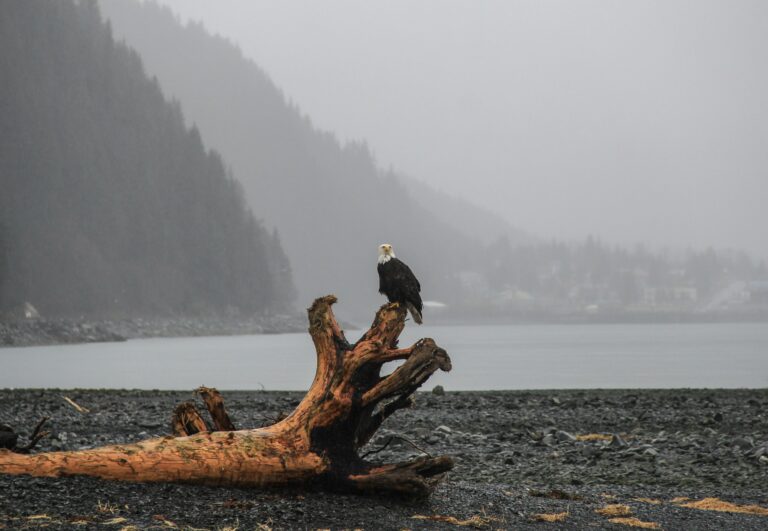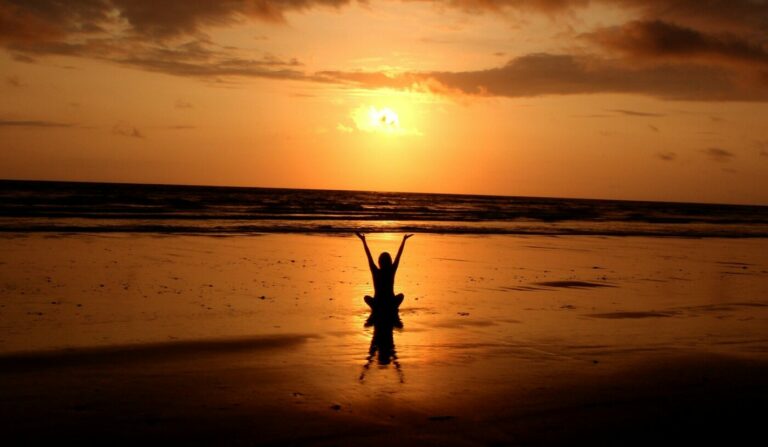(Excerpted in part from IMPACT Magazine)
There comes a point for most runners when the mind dwells on the palace of possibilities rather than of staying in what could be termed the “runners’ rut”. It could be that all personal challenges have been met at the 5kms, 10kms, half-marathon or even marathon distances, or that you’ve been drawn by something that has grabbed your interest. Maybe an article, a TV feature, a guest speaker or clubmate tapped into a gnawing for going beyond what has become a distance-plateau. Alternatively a case of the ‘I wonder ifs’ may pull at you and gradually a willingness not only to entertain the idea, but to gather information, check out what will be required and sign up for an event that thrusts you into a new arena.
For other sports known for extremes, that arena might include Ironman or Ultraman triathlons, 24 hrs adrenaline mountain biking or multi-day adventure racing. However, for the runner there is the graduated drive for distance beyond the marathon, a move that is generally accepted as minimally being completion of a 50kms event grants one the status of ultrarunner. Ultra possibilities are endless and almost limitless.
The point becomes – are you willing to honor that calling? Perhaps one way to know is to ask yourself “What would I do if my success were guaranteed?”
Just look at Terry Fox and how he inspired many to take up the challenge of extending their perceived limitations and self-doubt and as a multi-day runner certainly he had all the qualities required of a top ultrarunner.
Is it as easy as just stepping up the distance, slowing down the pace and staying on your feet longer? Well at the most basic level it is, but I doubt that those alone will continue to provide much inner drive or allow one to derive much satisfaction from such an ultra experience. The good thing is that there are many who have gone before and from whom we can glean much in the form of advice and modeling of what and what not to do.
Utilizing your own experience, wisdom and knowledge allows you to understand what it is that drives you, but it is necessary to develop patience, pacing and positivity, as well as a willingness to embrace delayed rather than relatively instant gratification.
‘Pain is inevitable, suffering is optional’ could be the ultrarunner’s mantra. Part of the attraction, for some, is to get through to the ‘other side’ and embrace a resurgence of energy, speed, strength and hopefully an exhilarating finish.
There will definitely be a need for extra gear if you are going really long. Items such as a fanny pack, camelbak, money, food, bear spray, cell phone, even a GPS or compass can prove to be very handy. Well-known American ultrarunner Dean Karnazes (author of Ultramarathon Man: Confessions of an All-Night Runner) often runs through the night and uses his cellphone to call for a pizza and gauges where he’ll be in time for the delivery! Night running can have its own perils and yet bring such sensory delights and possibly even epiphanies, but from a practical perspective one should have a Petzl light and, in races where it is allowed, a pacer.
Obviously hydration and nutrition need far more attention to detail for survival and success and strength training can certainly help with mental confidence.
We each have our preferences for different surfaces and types of courses, whether it be track, trail, road, or in some cases mountain hiking/climbing/crawling. There are also some popular stage-races such as the Marathon des Sables or adventure runs such as to Machu Picchu.
Some of Alberta’s big city ultras include the Cross Calgary 56km, Edmonton’s Blackfoot 50km, 50 mile and 100km and Lethbridge’s Lost Soul 50km, 100km and 100 miler. While Red Deer Ironman Woody Paylor travels the globe to race in triathlons, a couple of Medicine Hat ultrarunners race wherever they can, with Murray Barker taking 4th in the Le Griz 50 miler in Montana and Sandra McCallum, a Marathon des Sables finisher, being first female finisher in the Blackfoot 50 miler.
Ultrarunning is also a discipline that women have mastered in terms of overall wins – possibly the most famous is Pam Reed’s two overall wins in the Badwater Death Valley 135 miler. 2005 saw women taking the top three places out of 50 finishers in Virginia’s Great Eastern 100km, the top two in Illinois’ Rock Cut Hobo 50km, and the overall winner (by 42 mins!) out of 78 finishers in the Arkansas Traveller 100 miler. Last year saw women taking first and third places overall in Squamish, BC at the demanding STORMY 67kms trail run. Wendy Montgomery, a national team member, has taken second overall in the Haney to Harrison solo 100kms, held over the same course and on the same day as the popular eight-stage relay event.
Well-known triathletes such as Lori Bowden, Peter Reid and Mark Bates have all excelled in their forays into ultras, with Lori having set a Canadian women’s 50kms record, Peter taking second in the Diez Vista 50kms and Mark winning the North Shore Knee Knackering 30 miler.
Although a marathon can certainly bring on a plethora of aches and pains, ultras can take toenail blackening to new extremes. American uberultraman Marshall Ulrich had his toenails surgically removed to counteract this problem and has cut out the tops of his shoes, but then again he’s also climbed all the major Peaks and became the first person to cover Death Valley unaided (pulling all his own equipment) as well as doing a double out-and-back Death Valley run for charity, 600 miles in the blistering heat!
If you are looking for one book that encompasses some of the history, physiology, ultra characters, philosophy, resources and training and racing advice, then I would recommend getting a copy of A Step Beyond: A Definitive Guide to Ultrarunning, which is edited by Don Allison, who is also the publisher/editor of Ultrarunning magazine.
The latest edition (December) of the magazine contains an abbreviated History of Canadian Ultrarunning by Andy Milroy, who is arguably the world’s foremost ultrarunning historian.
The excellent Ultrarunning.com website allows the browser to find out what’s happening in this poor cousin to Track and Field. The Association of Canadian Ultramarathoners has its own website and lists age group records and a race calendar.
Edmonton’s Stefan Fekner and Ontario’s Andy Jones and Victor Hickey all became world-class at the standard 50km, 50 mile and 100km ultra distances, whereas BC’s Al Howie has done the Race Across America and is the record holder for the across Canada run. BC’s Ferg Hawke has twice been second at the Badwater 135miler, in 2005 it was to Washington’s Scott Jurek, the seven-time Western States champ and now record holder for Badwater in 24:36:08!
Monica Scholz, a 38 year old lawyer from Ontario, who has been the first female finisher at Badwater and top three overall, has run over 100 ultras, including a world record setting 23 – 100 milers in one year and for good measure has also done the Furnace Creek 508 mile bike race.
In my opinion the best ultrarunner of all-time is Greek/Australian Yiannis Kouros whose many world record exploits include being the first to run over 300km in a 24hrs track race.
Some of the race names can be intimidating to the newcomer. Names like The Canadian Death Race, a 125kms trail run in Grande Cache, Alberta or the Vulture Bait 50km in London, Ontario, which reminds me of a classic ultra book, And Then The Vulture Eats You, edited by John L. Parker Jr.
Among the world’s classic ultras are South Africa’s 90kms Comrades Marathon, which attracts over 20,000 runners, California’s lottery/time qualifying Western States 100 miles and Morocco’s 145 mile six-stage Marathon des Sables (with a U$2,800 entry free). The Comrades Marathon has one million spectators along the course and 40,000 in the finish stadium plus TV coverage and the best aid stations I’ve ever experienced. In other lower-key events you are on your own and on the lookout for occasional course-marker ribbons.
Cross-training can be of great benefit. Edmonton’s cross-country skier-marathoner- turned-ultrarunner, Jack Cook won the 2005 Toronto 100kms in 7:37, a time that would be good enough to get on the Canadian World Challenge team.
North Vancouver’s Sybille Tinsel and her husband Ean ‘Action’ Jackson have organized Club Fat Ass (founded by Joe Oakes) and created a series of friendly, fun-filled, ultra-family events. Speaking of family, Edmonton’s Logan Beaulieu (Ultramag cover boy) spent 16 days in a coma after a serious car accident, but 5 years later at the tender ultra age of 21, he covered over 100 miles in 24hrs. Meanwhile his father, Moe ‘the Eagle’ is nearing his 100th ultra and race directs a number of ultras in the Okanagan Valley.
For some the goal may be to complete one particular ultra, whereas for others it may be finishing a Series or the Grand Slam – the Old Dominion, Western States, Leadville and Wasatch 100 milers, all within the same year. One recently completed ultra goal was set by American ultra legend and coach, David Horton, who recently set a speed record for the Pacific Crest Trail, a distance of 2,666 miles, which he covered in 66 days 7 hours and 16 minutes.
Being a successful elite ultra runner requires the same type of training pyramid of base mileage, hills and speed. For successful completion of ultras training weekly mileage can vary from 40 – 60 miles, with the longest run being 25 miles, for successful times and placings it would be better to run between 60 and 100 miles, with the longest runs being between 28 and 35 miles. Often the training run should be about duration rather than distance. Some ultrarunners barely run during the week, instead using the races as their training. This often applies to ‘streak’ marathoners too!
Certain courses and conditions will require that you use a run/walk strategy, so it is advisable to spend some time developing your race-walking technique as it can preserve your strength and finishing time goals when faced with major climbs or rough patches.
If you are having doubts about doing an ultra, you might consider crewing for a runner, which provides a whole new perspective and you can witness first-hand the highs and lows that an ultra runner and sometimes the crew go through. They say that you know you are a true ultrarunner when you meet an appealing member of the opposite sex and your first thought is that they could be part of your crew!
As I said near the beginning, there truly is no end of possibilities. I have some friends who regularly bring in the New Year by running through the midnight hour in a 24hrs race in California. For extra measure it is complemented by 48 and 72 hr events! For newcomers the standard ultra distance is 50kms but then hey, if you really like to go long, you can always do a 6-day track race or even a 3,100 miler in New York on a one mile out and back course – mind-boggling!
Although ultras often have few spectators, they can provide immense personal satisfaction and indelible memories of a kind that intense-speed or pressured racing could never provide.
If you see a re-run of the Tom Hanks Forrest Gump film and you start to feel that his cross-country running exploits appeal to you, then please remember that there really are other chocolates in the box. Then again, it was after a few beers that Tom Crawford and Rich Benyo hatched their Death Valley out-and-back 300 mile adventure (including the climb to the top of Mt. Whitney) and I must admit that it was reading the account of their blister-fest that set me on the path to my own spiritual run through Death Valley – and I can’t wait to go back!


